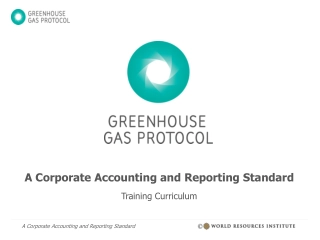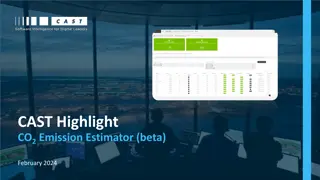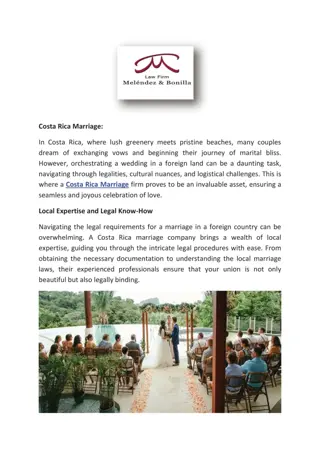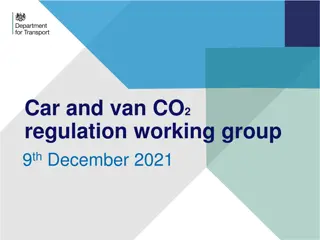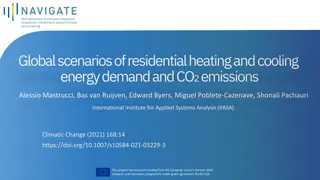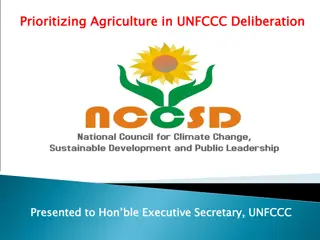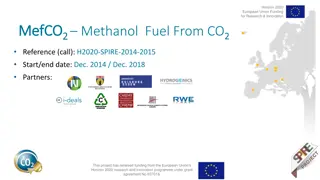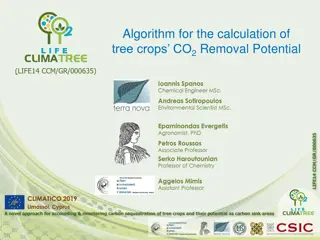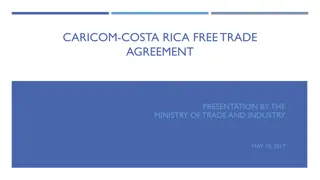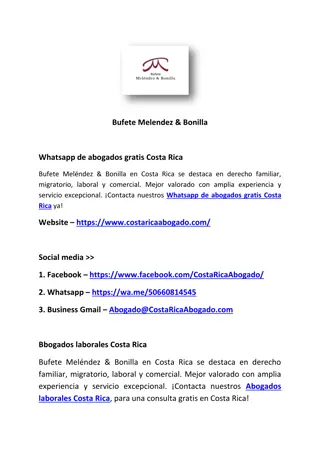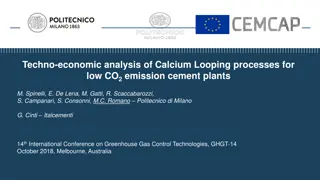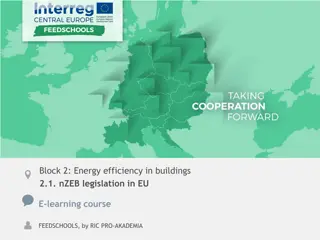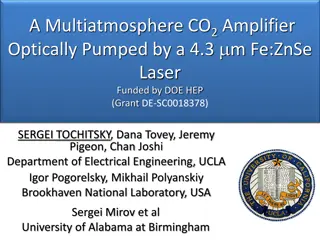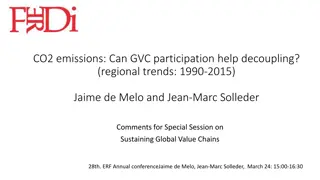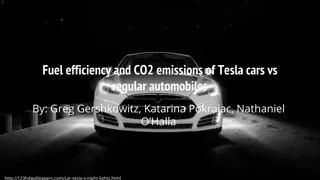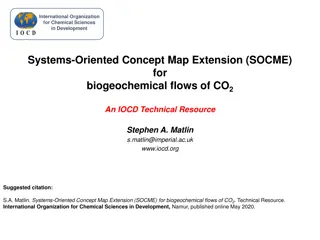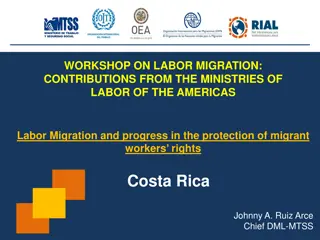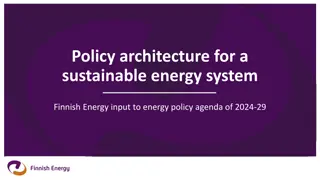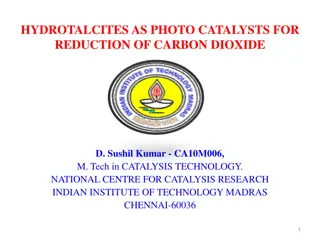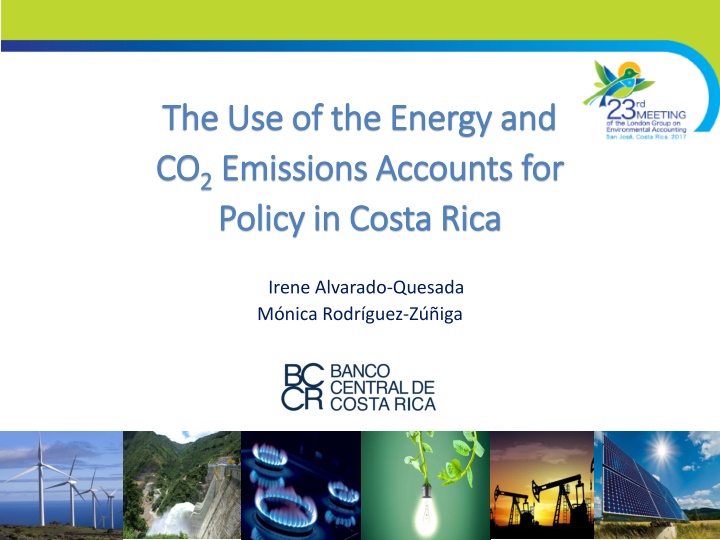
Energy and CO2 Emissions Policy in Costa Rica
Explore the use of energy, CO2 emissions, and environmental accounts in Costa Rica. Discover the timeline of environmental accounts compilation, energy sources, employment by energy intensity, and more insights into Costa Rica's energy landscape.
Download Presentation

Please find below an Image/Link to download the presentation.
The content on the website is provided AS IS for your information and personal use only. It may not be sold, licensed, or shared on other websites without obtaining consent from the author. If you encounter any issues during the download, it is possible that the publisher has removed the file from their server.
You are allowed to download the files provided on this website for personal or commercial use, subject to the condition that they are used lawfully. All files are the property of their respective owners.
The content on the website is provided AS IS for your information and personal use only. It may not be sold, licensed, or shared on other websites without obtaining consent from the author.
E N D
Presentation Transcript
The Use of the Energy and The Use of the Energy and CO CO2 2 Emissions Accounts for Emissions Accounts for Policy in Costa Rica Policy in Costa Rica Irene Alvarado-Quesada M nica Rodr guez-Z iga
Timeline Timeline of Costa Rica Costa Rica of environmental environmental accounts accounts of of 2012 First approach with WAVES/World Bank to start the compilation of environmental accounts 2014 Forest and Water accounts 2015 Energy accounts May 2016 Publication of the first environmental accounts for Costa Rica October 2017 Update of environmental accounts
Energy Energy and CO and CO2 2emissions emissions accounts accounts Available for the years 2011-2015. Account focuses exclusively on use of energy; supply and transformation are not included yet. CO2emissions correspond to the emissions generated by consumption of energy products by economic activity.
Costa Rica: Costa Rica: Composition Compositionof requirements requirementsby of the the total , 2011- -2015 total gross gross energy 2015 energy by source source, 2011 160,000 140,000 120,000 100,000 Terajoules 80,000 60,000 40,000 20,000 - 2011 2012 2013 2014 2015 Fuels and others Renewables Electricity Source: BCCR, Costa Rica s Energy Account 2011-2015.
Energy Energy and CO and CO2 2emissions emissions accounts accounts Energy sources used for electricity supply, 2015 Main use of primary energy sources power generation. 1% 10% 13% Main use of secondary energy sources fossil fuels (60% of total net energy use in 2015). 76% Hydro Geothermal Wind Others Source: BCCR, Costa Rica s Energy Account 2011-2015.
Costa Rica: Costa Rica: Energy and and employment employment by Energy intensity intensity, share of by economic economic activity , share of gross activity, 2015 gross value , 2015 value added added % share of participation 0% 5% 10% 15% 20% 25% 30% 35% 40% 45% Water and air transport, and freight Other services Education, human healt and public adm Food and beverage service activities Accomodation Passengers and freight transport Electricity and water supply Wholesale and retail trade Other manufacturing Manufacture of chemicals, cement and petroleum Manufacture of food and beverage Manufacture of sugar Manufacture of rice and coffee Agriculture, forestry and fishing 0.000 0.020 0.040 0.060 0.080 0.100 0.120 0.140 0.160 Energy intensity (TJ/million CRC) % gross value added % employment Energy intensity Source: BCCR, Costa Rica s Energy Account 2011-2015.
Costa Rica: GDP and CO Costa Rica: GDP and CO2 2 emissions interanual variation variation (%), 2011 (%), 2011- -2015 2015 emissions interanual 4.80% 4.67% 3.51% 3.57% 2.27% 2012 2013 2014 2015 -0.27% -1.02% -4.71% CO2 GDP Source: BCCR, Costa Rica s Energy Account and Production Statistics 2011-2015.
Uses and Uses and Users Users of of the the Energy Energy Accounts Accounts Energy accounts have not been used yet explicitly to develop public policy. Applications have been identified for the energy accounts: Monitoring and evaluation of national plans of the energy sector. Policy analysis.
Policy/ Project Users Uses Directorate of Climate Change National Climate Change Strategy Secretariat of Planning of the Energy Subsector Monitoring and evaluation VII National Energy Plan Ministry of National Planning and Economic Policy Sustainable Development Goals Energy Accounts Central Bank of Costa Rica IEEM - CR Ministry of National Planning and Economic Policy Policy analysis MIE Directorate of Climate Change TIMES- CR Source: BCCR.
Monitoring Monitoring and and evaluation evaluation I. National Climate Change Strategy (ENCC) Directorate of Climate Change of MINAE. Aim: to achieve carbon neutrality in 2021 and to become resilient to impacts of climate change. Six strategic axes at a national scale: mitigation, adaptation, measuring, capacity building, awareness raising and funding. Priority sectors for emissions reduction: Electricity generation Transport Agriculture Water resources Solid waste management Tourism
Monitoring Monitoring and and evaluation evaluation II. National Energy Plan 2015- 2030 Secretariat of Planning of the Energy Subsector (SEPSE) of MINAE. Aim: to achieve energy efficiency with low emission levels. Reduce dependency on hydrocarbons, especially in transport sector. By means of the energy accounts, institutional channels between account compilers and decision makers have been created.
Monitoring Monitoring and and evaluation evaluation III. Sustainable Development Goals Assistance in monitoring two main targets associated to SDG 7: Target 7.3 Increasing the share of renewable energy in the global energy mix by 2030. Tarjet 7.3. Doubling the global rate of improvement in energy efficiency.
Policy Policy Analysis Analysis I. Integrated Environmental Economic Modeling for Costa Rica (IEEM-CR) BCCR-IDB Recursive, dynamic GEM that incorporates the environmental accounts. Forward-looking analysis of public policies and understanding of the impact of decisions before their implementation. Risk scenarios that consider environmental factors for macroeconomic projections.
Policy Policy Analysis Analysis II. Integrated Modeling of the Economy (MIE) Mideplan and UN-DESA Training workshops on integrated economic modeling to cover economic and social dimensions of sustainable development. Use of GEM to model selected social indicators Example: effect of reduction of CO2emissions established in the INDCs over GDP growth and employment
Policy Policy Analysis Analysis III. TIMES-CR PMR-CR /World Bank Support program to develop projections for long- term planning to comply with INDCs. Analysis of the decarbonization pathways available for Costa Rica. BCCR member of the analysis team Identify data and understand quality of information. Validate underlying assumptions of the model and parameters according to Costa Rican context.
Future challenges Future challenges Development of the supply and transformation components of the energy accounts to expand their outreach for policy making. Continuous improvement of existing accounts (additional sources of information, strengthening of existing data). Emphasize institutional channels for interactions with actors of the energy sector.
Questions for the London Group Questions for the London Group Are there additional applications or uses that you consider could be developed from what you have seen from the energy and CO2 emissions accounts of Costa Rica? What are some of the best practices that you have implemented to use the environmental accounts as policy tools?
Thank you Thank you

